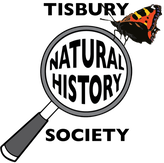|
The British Trust for Ornithology (BTO) is an environmental charity which aims to increase our knowledge of birds and other wildlife and, using data gathered by volunteers, seeks to inform decisions on government policy, land use and conservation priorities.
To do this, it organises a range of recording schemes through which volunteers gather data about birds’ numbers, distribution, habits, breeding success, and more. One of these schemes is the Wetland Birds Survey (WeBS) which counts the UK’s internationally important non-breeding waterbirds. This includes wildfowl (ducks, geese, and swans) waders, grebes, cormorants, and herons. Since it started in 1947 this scheme has grown and now over 3000 volunteers monitor 2,800 sites. Each volunteer adopts a location to count once a month, with the core counting season between September and March as this is when the numbers of many species peak. The largest aggregations of waterbirds are at our estuaries. But inland lakes and wetland areas are favoured by certain species so cumulatively they also contribute. Locally, Fonthill Lake and Wardour Castle Lake are monitored, but as waterbirds can be very mobile, and one can often see wildfowl flying between these two areas, there is a risk of double counting. So, one Sunday a month is designated as the core count day, so that all counters can visit their sites on the same days. Records over decades for these sites show significant changes in the balance of species seen and their annual peak counts. Unfortunately, most of these changes show a downward trend. Collecting all the information together from all sites across the country allows the BTO to generate indices and trends for each species. As many of the species that overwinter in the UK breed elsewhere, in Europe or the Arctic, changes in abundance relate to conditions across large parts of the world. Monitoring these bird numbers help us to assess how wildlife populations are responding to environmental change. The efforts of all those volunteers contribute to documents such as the recently published State of Nature report which provides a benchmark for the current status of our wildlife. It doesn’t make happy reading, but one can be assured that it is based on the best data available. Andrew Graham Comments are closed.
|
Photo: Avocets (Izzy Fry)
The headers display photos taken by our members. Do get in touch via the Contact Form if you'd like to submit a photo for selection.
Archives
May 2024
Categories
All
|

 RSS Feed
RSS Feed